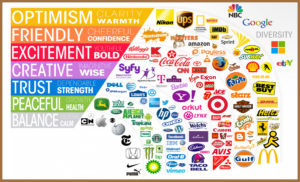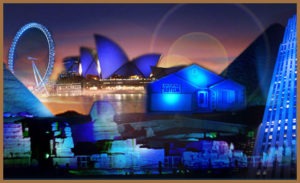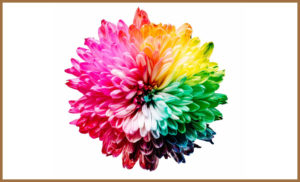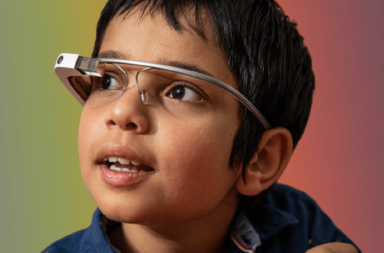When done right, some colours become synonymous with the things they are used to represent. Take for example the healthy green hues of the Samaritans’ logo or the sleek, futuristic black of the Apple apple. Even in the world of literature, it’s hard not to see a hopeful yellow background with a powerful red centre and think of Superman. Yes, it’s a fact that, for any given thing, there is a colour to reflect it. But which colour represents autism?
This is a question which I have seen raised multiple times (especially in the lead up to World Autism Awareness Day) and, with the help of both my marketing degree and own perspective of being autistic, today I aim to find both an answer to what colour represents autism, while simultaneously frustrating every non-U.K. reader by spelling ‘colour’ the correct way the British way.

(Photo Credit: Grayson)
The Colourful History of Autism Colour
While the world of autism was a blank canvas for much of the late 20th century, with most of the discussions surrounding autism taking place in laboratories and psychologist catch-ups (fun), changes in understanding in the early 2000s meant that autism awareness became a top priority for the newly formed autistic community and, as such, we needed colours to fly our flag and grab attention.
For better or worse (but mostly worse), many gravitated towards the colour blue – due to its connotations with calmness and acceptance. However, at that time, blue was also chosen as autism was widely considered a male-only condition – an idea which has since been proven wrong and, in many ways, damaging for female representation on the spectrum.
In stark contrast to the Brit boy band of the same name, Blue’s popularity only rose during the late 2000s. This was due to a myriad of factors but rooted at the centre of them all was the American charity Autism Speaks – which was launched in 2005 and featured a blue puzzle piece as their logo. The colour then gained further traction in 2007 when the same charity created the Light it up Blue campaign: a World Autism Awareness Day initiative, which saw landmarks, celebs and everything else imaginable bathed in the charity’s colours around the world.
Now longtime readers will know just how controversial the autism puzzle piece is, however, I rarely discuss how damaging the pushers of this piece are themselves. As, for much of the charity’s history, Autism Speaks have published ads comparing autism and everything it stands for to a kind of demon waiting to take your loved ones away. This is probably a conversation for another day but, for now, just know that their messages haven’t exactly been something the autism community wants our colour tied to.

(Photo Credit: Autism Speaks)
What Colour should represent Autism?
So, with blue leaving many in the autism community feeling, well, blue and the need for awareness and a community identity stronger than ever, it comes as no surprise that many can feel lost when looking for a colour to umbrella under.
Over the years, many challengers have arisen seeking to take the crown of the definitive autism colour. However, few have succeeded, leaving the throne still vacant. While I myself have my own preferences, which will become clear soon enough, here is a slightly unbias rundown of the bookies’ favourites:
Blue
Maybe it’s because old habits die hard or maybe it’s because all the pre-bought blue autism merch can’t be refunded, but it seems that when it comes to assigning a new autism colour, some people have taken the ‘if it ain’t broke don’t fix it’ approach – despite the reality being that blue is almost certainly ‘broke’ as a colour (but let’s not repeat ourselves).
Red
Put forward in 2015 to stand as a direct contrast to Autism Speaks ‘light it up blue’ campaign, red is a striking colour often used for raising awareness of the neurodiversity movement. With heavy ties to passion and love, two things which autistic people are often misaccused of being incapable of, red has become a fast favourite, despite being held back by its connections with rage and anger – associations which don’t do it any favours, especially when the colour was originally intended as a protest above all.
Gold
Used by those who want to see a move away from autism awareness and on to autism acceptance, gold is a colour commonly associated with wisdom, enlightenment and optimism. Chosen due to the periodic symbol for the element gold: Au, gold may be much rarer than most other colours on this list, but it’s inoffensive nature and clever origin make it a strong contender for autism colour.
Purple
The iconic colour of the U.K’s National Autistic Society, purple is a natural progression away from blue, due to having the same hues as the colour but better connotations, such as imagination and being the most powerful wavelength of a rainbow (which in itself is a spectrum). Purple is also considered rare in nature which could be seen as a negative, due to making autism seem a lot less prominent than it actually is. However, it has also been seen as a colour for royals, which makes it perfect to take the aforementioned autism colour crown.
Taupe
Used to highlight the somewhat ironic nature of the Light It Up Blue campaign, which features dazzling lights and overwhelming publicity events to raise awareness of a community who suffer from sensory processing issues. Tone it down Taupe may not be the most obvious choice for autism colour but, since 2013, it’s underdog nature makes it an exceptionally endearing alternative, when all other colours are blitzing skylines on April 2nd (and hey, it’s coincidentally quite close to my site’s colour – so it gets my vote!).
Rainbow
Why settle for one colour when you can have them all? Used to portray the autistic spectrum in its full diverse entirety, the use of a rainbow (usually not far away from an infinity symbol) is a great solution to the autism communities indecisiveness and its connotations with joy and optimism make it a welcome one at that. One major concern with the use of this, however, is that the use of a rainbow could easily be confused with the same colours used by the LGBTQ community means that, even when your answer to ‘What colour should represent autism?’ is ‘All of the above’ there is still room for contention!

Carry on the Conversation
What colour do you think should represent autism? Let me know in the comments below. And, if you want to hear more about controversial items used to portray autism, then why not check out my article on The Autism Puzzle Piece Debate.
As always, I can also be found on Twitter @AutismRevised and via my email: AutisticandUnapologetic@gmail.com.
If you like what you have seen on the site today, then show your support by liking the Autistic & Unapologetic Facebook page. Also, don’t forget to sign up to the Autistic & Unapologetic newsletter (found on the sidebar on laptops and underneath if you are reading this via mobile) where I share weekly updates as well as a fascinating fact I have found throughout the week.
Thank you for reading and I will see you next Saturday for more thoughts from across the spectrum.


